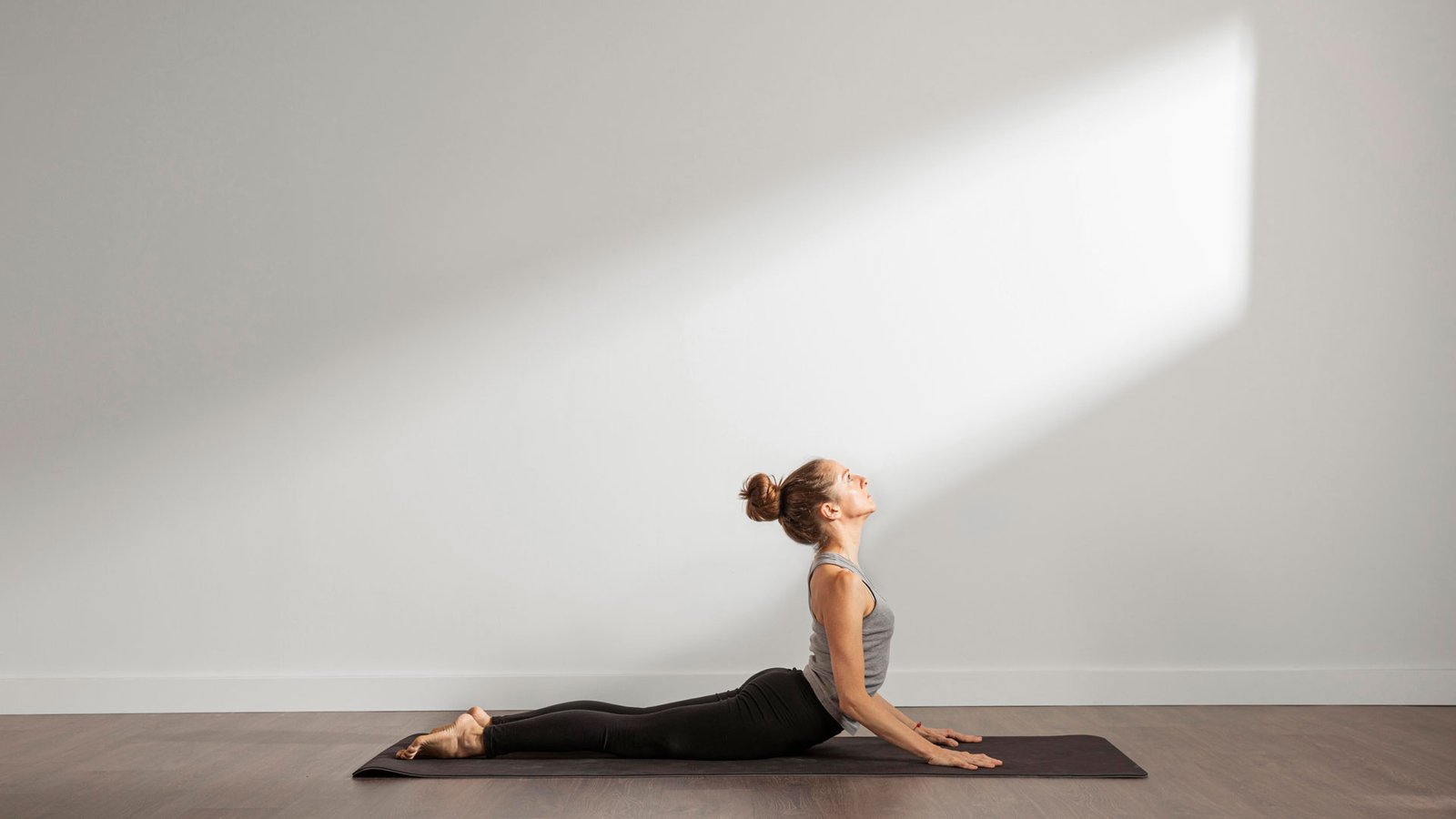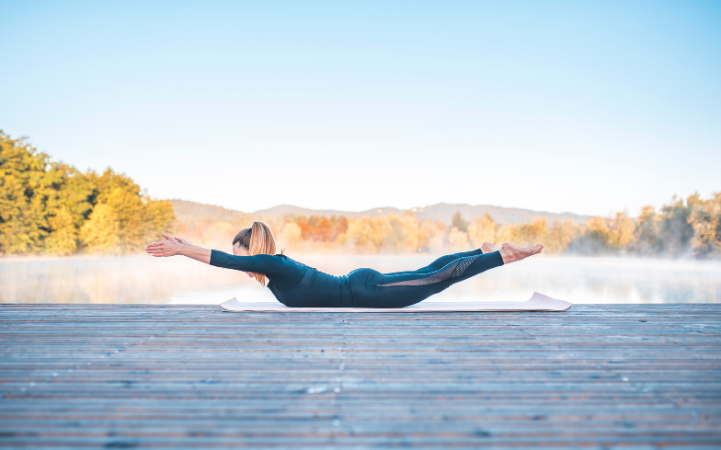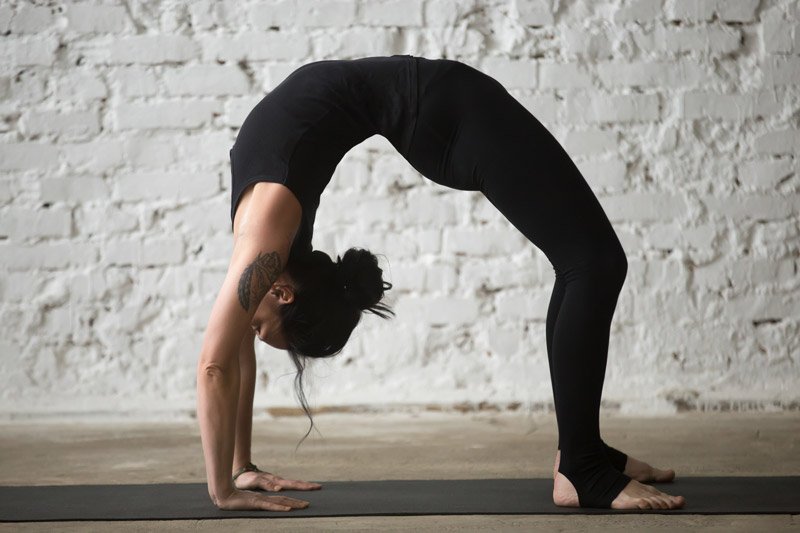Janu Sirsasana, also known as the Head-to-Knee Pose, is a seated forward-bending yoga posture that offers deep stretching benefits for the hamstrings, lower back, and spine. The Sanskrit name Janu Sirsasana is derived from three words:
Janu – meaning knee
Sirsa – meaning head
Asana – meaning posture
This asana is an excellent pose for improving flexibility, calming the mind, and promoting relaxation. It is suitable for practitioners of all levels and is often included in yoga sequences for its therapeutic benefits.
Steps to Practice Janu Sirsasana
Starting Position: Sit on the floor with your legs extended straight in front of you in Dandasana (Staff Pose). Keep your spine straight, and place your hands beside your hips.
Bend One Knee: Bend your right knee and bring the sole of your right foot to the inside of your left thigh. Your right knee should drop toward the ground, and your hips should remain squared forward.
Inhale and Lengthen the Spine: As you inhale, lift both arms overhead and stretch your spine upward, ensuring that your back remains straight.
Exhale and Fold Forward: Slowly exhale and begin to bend forward from the hips, reaching toward your extended left leg. Keep your spine long and avoid rounding your back.
Hold Your Foot or Shin: If possible, hold your left foot with both hands. If you cannot reach, place your hands on your shin, ankle, or use a yoga strap around your foot for support.
Deepen the Stretch: With each exhale, try to go deeper into the stretch, bringing your forehead closer to your knee while keeping your chest open.
Breathe and Hold the Pose: Hold the position for 30 seconds to 1 minute, breathing deeply and maintaining a relaxed posture.
Release the Pose: Inhale, slowly lift your torso back up, and straighten your right leg.
Repeat on the Other Side: Perform the same sequence on the left side to maintain balance in the body.
Benefits of Janu Sirsasana
1. Improves Flexibility
Stretches the hamstrings, calves, and lower back, making it a great pose for athletes and those with tight muscles.
2. Strengthens the Spine
Enhances spinal mobility and reduces stiffness in the back, which can help alleviate back pain.
3. Stimulates Digestive Organs
The forward bend massages the abdominal organs, improving digestion and relieving bloating.
4. Calms the Mind
This asana has a calming effect on the nervous system, reducing stress and anxiety.
5. Boosts Circulation
Increases blood flow to the lower back, pelvis, and legs, improving overall circulation.
6. Supports Reproductive Health
Beneficial for women as it helps alleviate menstrual discomfort and enhances reproductive health.
7. Enhances Posture
Encourages proper spinal alignment and prevents slouching, which can reduce long-term postural issues.
8. Helps with Sciatica Relief
The gentle stretch in the lower back can help relieve sciatica pain by reducing nerve compression.
Tips for Practicing Janu Sirsasana
Warm Up First: Do light stretches or poses like Downward Dog and Seated Forward Bend before attempting this pose.
Use a Strap if Needed: If you can’t reach your foot, loop a yoga strap around your extended leg to maintain alignment.
Keep Your Back Straight: Avoid rounding your spine; instead, hinge from the hips for a deeper and safer stretch.
Engage Your Core: Slightly engage your abdominal muscles to protect your lower back.
Relax Your Shoulders: Keep your shoulders down and away from your ears to prevent tension.
Modify the Pose: If your knee doesn’t reach the floor, place a cushion under it for support.
Breathe Deeply: Use slow, steady breaths to help relax into the pose and deepen the stretch gradually.
Cautions and Contraindications
1. Lower Back Injuries
Those with lower back pain or a slipped disc should avoid excessive forward bending. Modify the pose by keeping the spine more upright.
2. Knee Problems
If you have knee pain or an injury, avoid pressing your bent knee to the ground forcefully. Use a prop under your knee if needed.
3. Sciatica or Hamstring Strain
If you have sciatica or tight hamstrings, avoid overstretching. Keep a micro-bend in your extended knee.
4. Pregnancy
Pregnant women should perform this pose with care, keeping their torso lifted to avoid excessive pressure on the abdomen.
5. High Blood Pressure or Vertigo
Avoid deep forward bends if you experience dizziness or have high blood pressure. Keep the head elevated or use props for support.
Janu Sirsasana is a powerful yet gentle yoga pose that offers multiple benefits for flexibility, digestion, and relaxation. It is an essential part of any yoga routine, especially for those looking to relieve stress, stretch tight muscles, and improve posture. With regular practice and proper alignment, this asana can greatly enhance overall well-being. However, as with any yoga posture, it is important to listen to your body and modify the pose as needed to avoid strain or injury.
Whether you are a beginner or an advanced practitioner, incorporating Janu Sirsasana into your yoga practice can help you achieve greater flexibility, a calmer mind, and a more balanced body.






